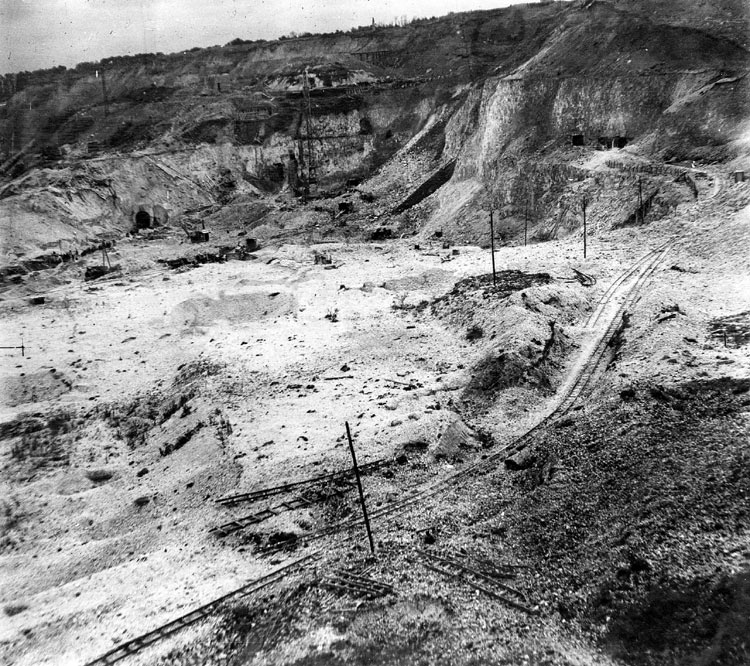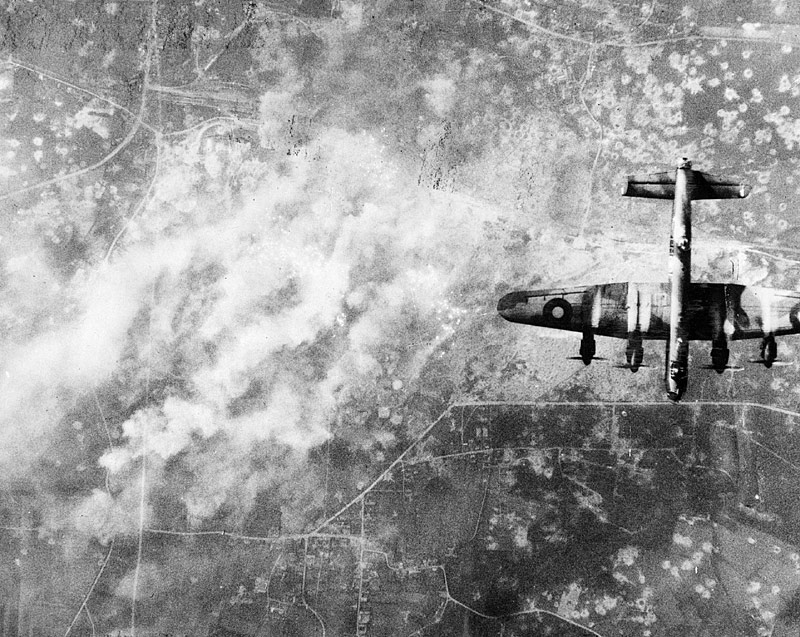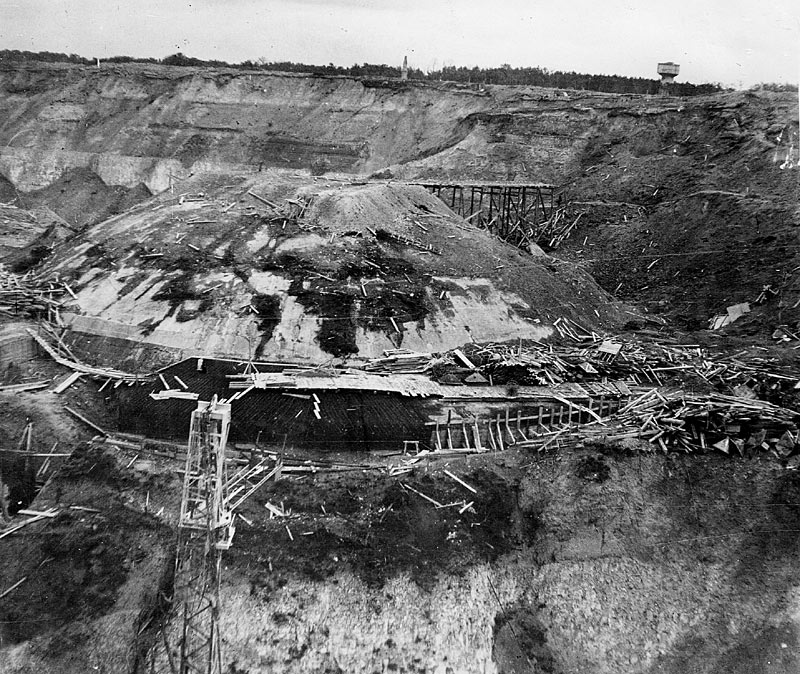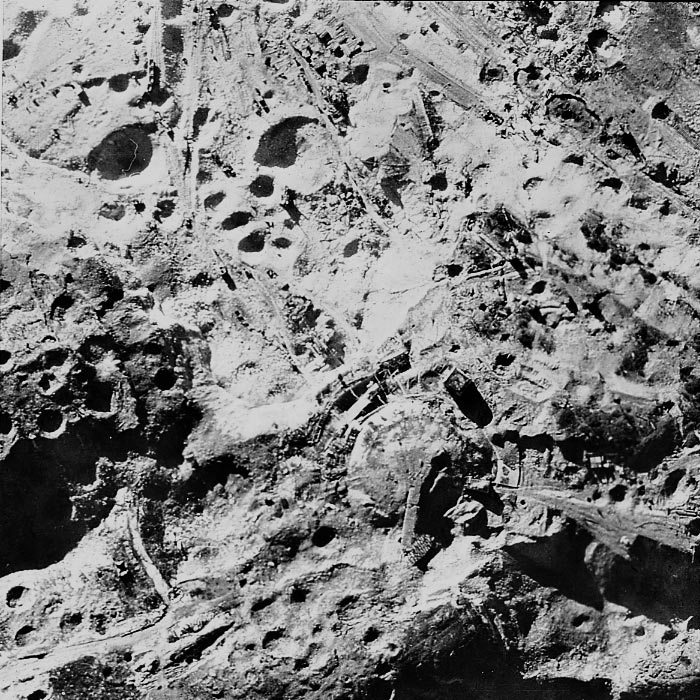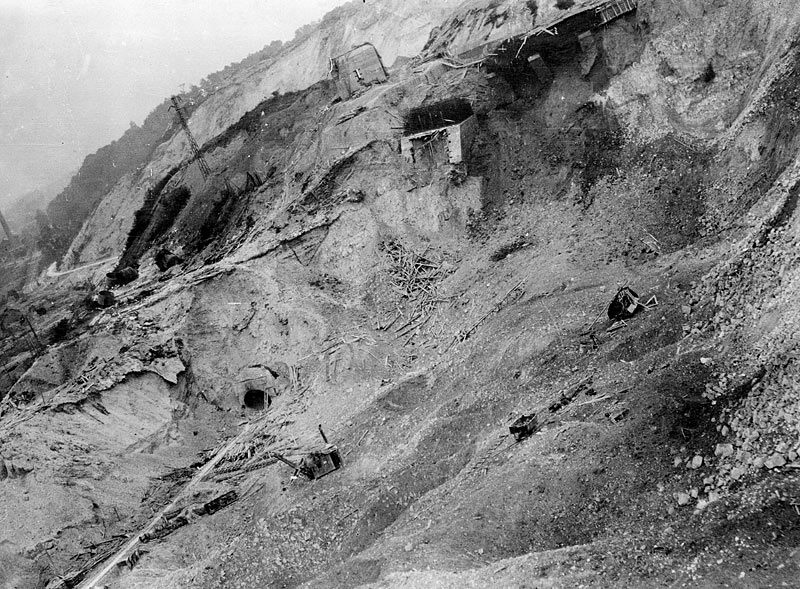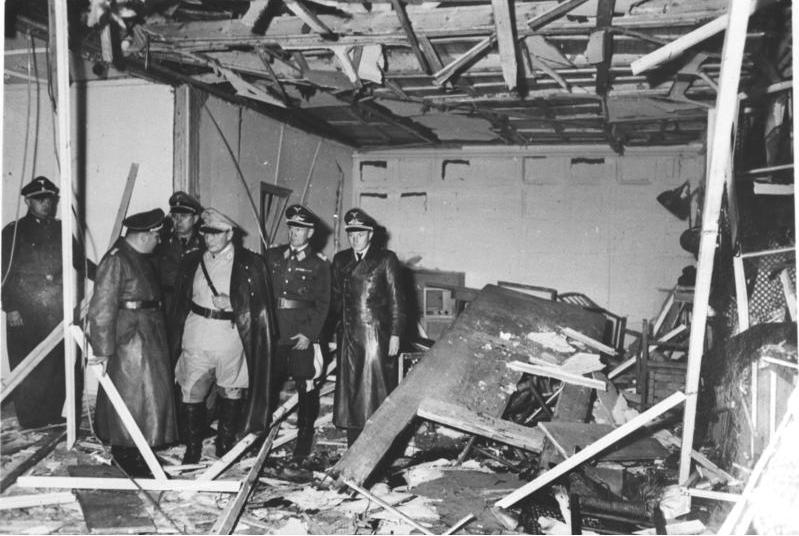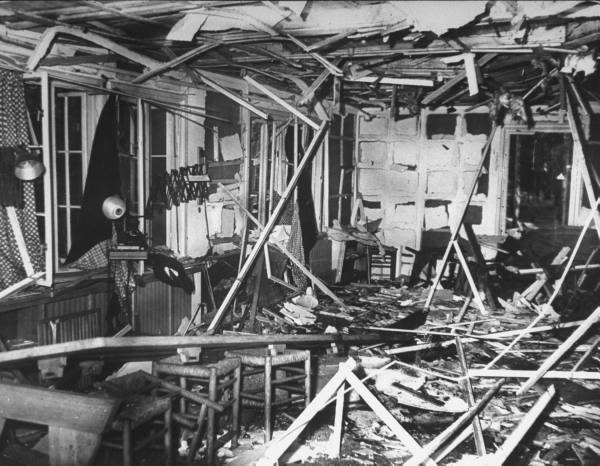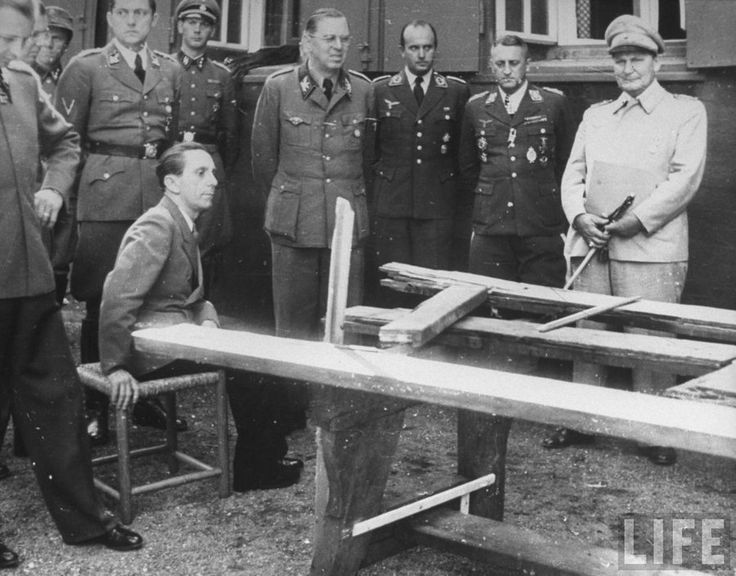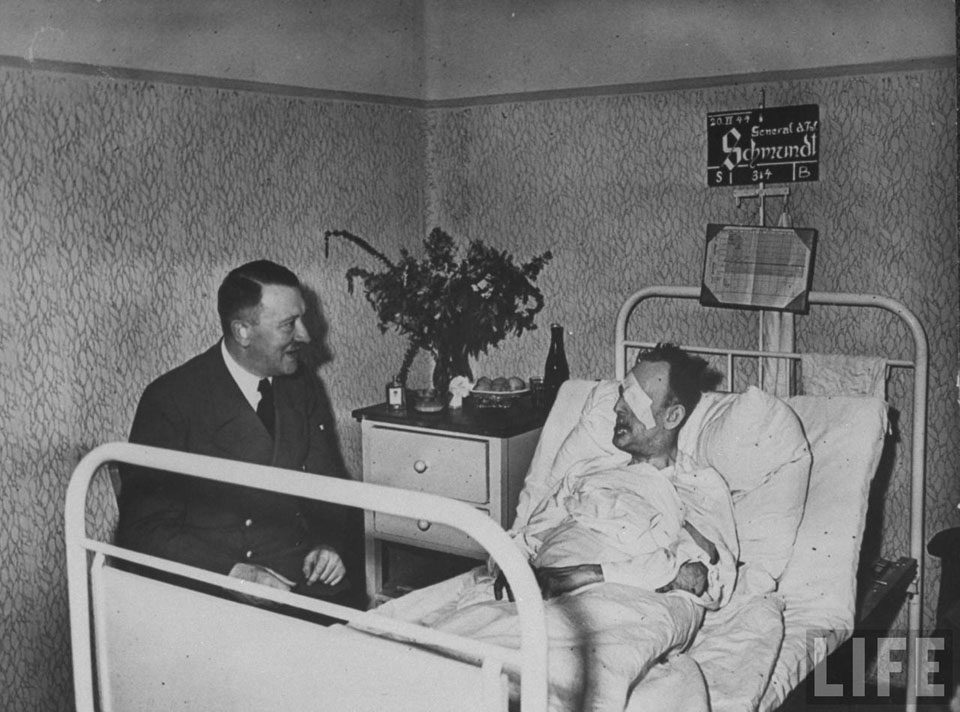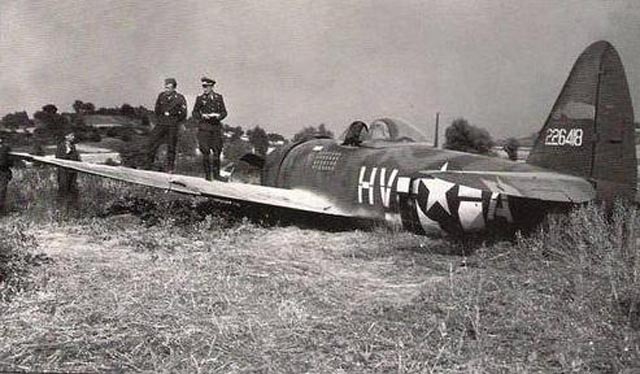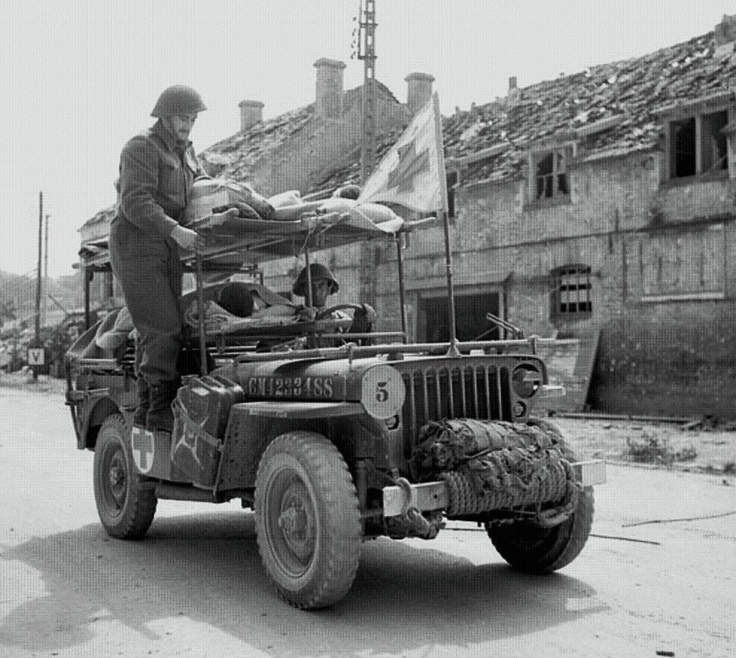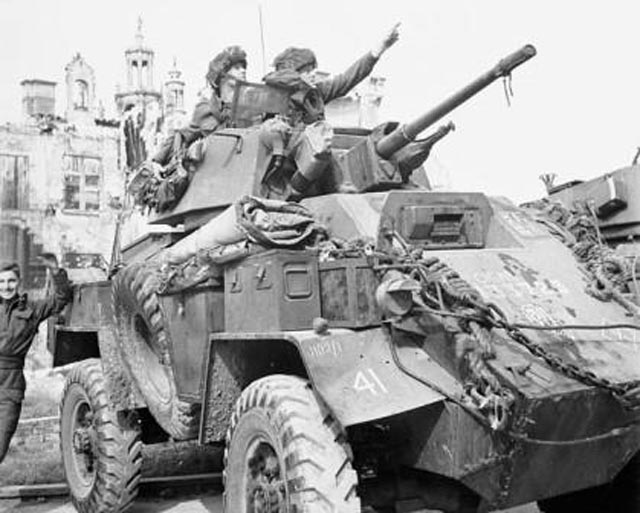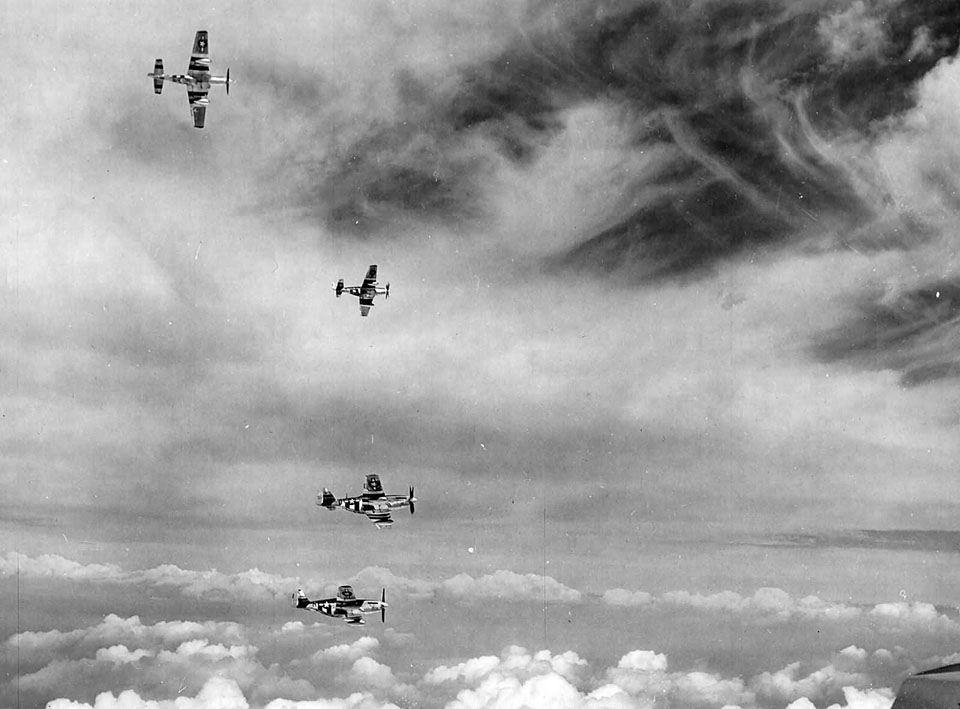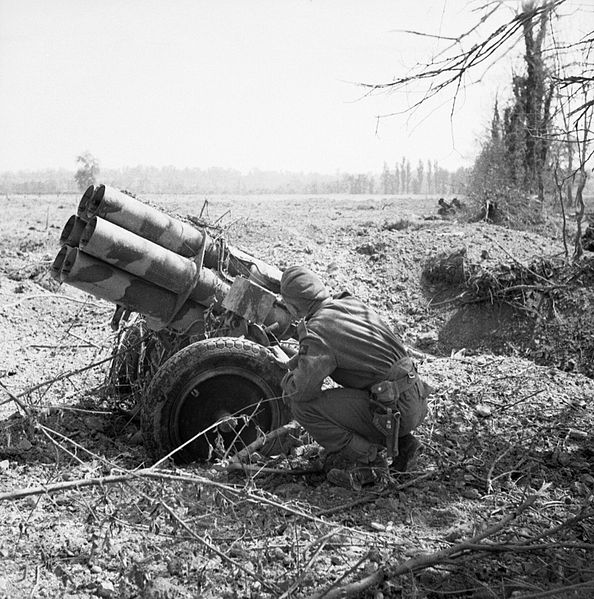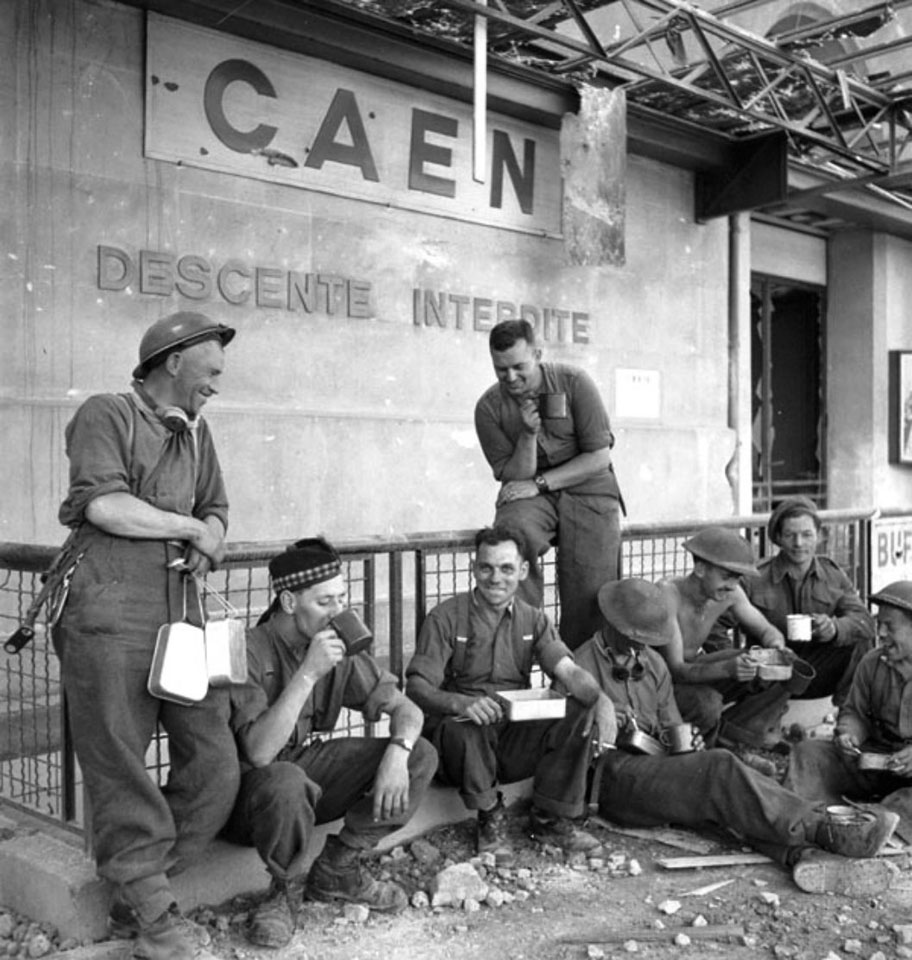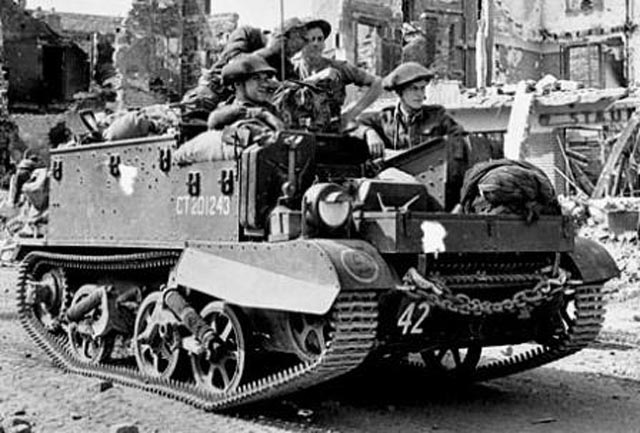Air Operations, Bonin and Volcano Islands
VB-109 PB4Ys based at Isely Field, Saipan/ attack Iwo Jima, Chichi Jima, and Haha Jima airfields.
[Air Operations, Carolines
FEAF B-24s attack the Yap Atoll.
[Air Operations, CBI
BURMA- Several 10th Air Force P-40s attack targets around Myitkyina.
- 11 308th Heavy Bomb Group B-24s attack Changsha.
- More than 140 14th Air Force P-51s and P-40s attack numerous targets in a wide area around Changsha, Shinshih, Hengyang, Leiyang, and Chaling.
Air Operations, East Indies
- V Bomber Command B-24s attack the Namlea airfield on Boeroe and shipping in Kayeli Bay in the Molucca Islands.
- B-25s attack shipping at Dili, Timor.
Air Operations, Europe
RAF BOMBER COMMANDDaylight Ops:
- ;369 aircraft attack 6 flying bomb launch sites and the V-weapon site at Wizernes. Included in the aircraft total are 174 Lancasters, 165 Halifaxes and 30 Mosquitos. All raids are successful except for the small raid by 20 aircraft on the Forêt de Croc site where the Oboe leader Lancaster is shot down and the bombs of this force all miss the target.
- Only the 1 Lancaster is lost.
- 302 Lancasters and 15 Mosquitos of Nos. 1, 5 and 8 Groups attack the railway yards and a 'triangle' rail junction at Courtrai. The Bomber Command report says that both sites 'were devastated'.
- 9 Lancasters are lost.
- 149 Halifaxes, 13 Mosquitos and 4 Lancasters of Nos. 4 and 8 Groups attack the synthetic oil refinery at Bottrop. The northern part of the target receives major damage.
- 7 Halifaxes and 1 Lancaster are lost.
- 147 Lancasters and 11 Mosquitos of Nos. 1, 3 and 8 Groups attack the Oil Plant at Homberg and cause severe damage. German documents show that the production of aviation fuel, which stood at nearly 6,000 tons per day at the end of April, is now fluctuating between 120 and 970 tons per day, following Bomber Command and American 8th Air Force raids.
- But German night fighters catch the Homberg bomber force and 20 Lancasters are lost. No. 75 (New Zealand) Squadron, from Mepal, loses 7 of its 25 aircraft on the raid.
- 54 Halifaxes, 23 Lancasters and 10 Mosquitos of Nos. 4, 5 and 8 Groups are sent to attack the flying bomb sites at Ardouval and Wizernes, but only 23 aircraft bomb at Ardouval and none at Wizernes.
- There are no losses.
- Support and 106 aircraft from training units make a diversionary sweep over the North Sea, 6 Lancasters and 5 Mosquitos make a 'spoof' raid to Alost, 26 Mosquitos are sent to Hamburg, 8 Stirlings lay mines off Lorient, 17 aircraft are on Resistance operations, and there are 42 Mosquito patrols and 33 RCM sorties.
- 1 Mosquito is lost on the Hamburg raid.
GERMANY:
- 1,077 8th Air Force B-17s and B-24s attack a broad array of oil-industry targets, ball-bearing plants, five airdromes, an arms factory, and an optical-instruments plant in western and central Germany.
- 19 heavy bomber are lost
- Escort for the heavy bombers is provided by 476 VIII Fighter Command fighters whose pilots down 10 Luftwaffe fighters and 1 Do-217 over Germany between 1100 and 1140 hours.
- 8 escort fighters and 7 pilots are lost
FRANCE:
- IX Bomber Command bombing missions are delayed by rain during the morning, but 62 B-26s and A-20s are able to mount an afternoon attack against a marshalling yard and a fuel dump.
- 9th Air Force fighters and fighter-bombers attack gun emplacements, bridges, and rail lines.
ITALY:
- 12th Air Force B-25s and B-26s continue to attack the Po River bridges.
- XII TAC fighter-bombers concentrate on rail targets north of the battle area.
GERMANY:
- 15th Air Force B-24s attack several aircraft factories around Friedrichshafen.
- B-17s attack the airdrome at Memmingen.
- Between 1045 and 1240 hours, pilots of the 1st, 14th, 31st, 82nd, and 332nd Fighter Groups down 15 Luftwaffe over Memmingen during the bombing attack there and over northern Italy during both the penetration and withdrawal phases.
Air Operations, Marianas
- The pre-invasion aerial bombardment of Guam by US carrier aircraft from Task Force 58 reaches its peak. Carrier aircraft also attack targets on Tinian, as do artillery based on Saipan and US warships.
- 318th Fighter Group P-47s complete 161 sorties against pre-invasion targets on Tinian.
Air Operations, New Guinea
- V Bomber Command B-24s attack the Moemi airfield and Manokwari.
- B-25s attack Kasim Island and shipping off Sorong and other coastal areas.
- A-20s support Allied ground forces near Sarmi.
- B-25s and A-20s attack dumps at Cape Moem, Sauri, and Wom.
- V Fighter Command fighter-bombers attack coastal targets of opportunity and Japanese Army troops on Kairiru Island.
Diplomatic Relations
The Russian-supported Polish Committee of National Liberation is formed.
[Eastern Front
Southwest of Kovel, in the central sector, the force of the 1st Belorussian Front reach the Bug River on a front of 40 miles.
NORTHERN SECTORThe Soviet 1st Shock Army pierces the front of the 18th Army near Ostrov as the 3rd Panzer Army buckles under assaults from the 2nd Guards and 51st Armies.
SOUTHERN SECTORThe 4th Panzer Army is crumbling, the Soviet 8th Guards Army having reached the Bug River. A relief attack by the XLVIII Panzer Corps toward the Brody Pocket fails.[MORE]
[English Channel
The British destroyer Isis sinks on a mine off Normandy with the loss of 154 of her crew.
[Italy
Units of the American 34th Div succeed in establishing an advance post along Highway 67 southeast of Pisa. The French 4th Mountain Div reaches the line Santo Stefano-Castelfiorention-Certalto on the left flank of the line.
The British XIII Corps has to modify its plan of attack to allow it to cover a wider front with its divisions, so as to take in the sector at present held by the French Expeditionary Corps, which is being withdrawn from the front. The region between the Chianti hills and Highway 2 offers few defenses, and the greatest efforts will be concentrated on the left flank, where the New Zealand 2nd Div and 8th Indian Div are getting ready to attack.
The South African 7th Arm Div captures Monte San Michele and Monte Querciabella allowing the 4th Div and British 6th Arm Div to advance into the Arno valley.[ITALY]
[Marianas
The bombardment of Tinian is stepped up a stage when army arty based on Saipan adds its weight to the attacks from the air and by naval shelling.
As the American fleet approaches its objective, the air and naval bombardment of Guam, which has been almost ceaseless since July 7, is stepped up to an unprecedented level.
[New Guinea
At the Driniumor River, the 112th Cavalry and the 127th Infantry Regiments of the 32nd Infantry Division stop a Japanese attack to outflank the American defensive line.
In the Aitape area, the 43rd Division begins to arrive. the 1st and 2nd Battalions of the 127th Infantry, now at the patrol base site on the East Brance, Koronal Creek, where they are being supplied chiefly by air, are ordered to prepare to move to the southeast toward Afua.
On Biak, TF HURRICANE conpletes the reduction of the enemy positions in the East Caves area. The bombardment of the Ibdi Pocket continues.
[Occupied France
German military conspirators temporarily seize control of Paris and imprison local SS personnel but wait in vain to hear confirmation of Hitler's death from Berlin. The SS regain control and release their comrades after Hitler's broadcast.
[Pacific
The US submarine Cobia (SS-245) engages a three-ship Japanese convoy northwest of Chichi Jima sinking the auxiliary submarine chasers No.3 Yesen Maru and No.2 Kaio Maru, and damaging the cargo vessel Shoei Maru but not before Cobia is rammed by one of the escorts causing minor damage.
[Southwest Pacific
JCS planners reject MacArthur's RENO V plan, indicating that the plan requires more air support that is available in-theater and would require most of the Pacific Fleet. They assess that MacArthur's approach would delay the invasion of Japan by one year.
[United States, Planning
Vice-Adm Kelly Turner, commander of the amphibious force, sets a date for the landing on Tinian of July 24. The 2nd and 4th Marine Divisions will make the landings. The 4th Marine Division is commanded by Maj-Gen Clifton B. Cates. The previous commander, Maj-Gen Harry Schmidt, takes command of V Amphibious Corps, replacing Lt-Gen Holland M. Smith, who is appointed commander, Fleet Marine Forces Pacific.
[Western Front
The US 1st Army continues its preparation for Operation COBRA.[WF]
In the Caen sector the Canadian 2nd Div captures St Andrè-sur-Orne after some hard fighting. The British attacks south and east of Caen continue, but the tenacious German antitank defense has worn down the advance units and cut their momentum.
[Germany, Resistance
Shortly after midday a bomb explodes in the conference room at Hitler's HQ at Rastenburg in East Prussia. Hitler, although badly shaken, is only slightly hurt. The bomb has been planted by Col Count Claus von Stauffenberg who represents in this a wide-ranging conspiracy of senior officers and a few politicians. Immediately after the bomb goes off the conspirators act on the assumption that Hitler is dead. In fact the bomb, disguised in a briefcase has been moved slightly by another officer and Hitler, shielded from the blast by the heavy leg of the map table, thus survives. Not all the elements of the conspirators' plan are carried out with sufficient ruthlessness to achieve much success, and once it is clear that Hitler has survived, the plot falls apart. On the first day several of the leading participants, including von Stauffenberg, are shot in Berlin, and eventually the Nazi vengeance will encompass several thousand executions. Hitler later delights in watching film of these. Among those actively involved in the plot are Gen Ludwig Beck, Carl Gordeler (formerly mayor of Leipzig), Field Marshal Erwin von Witzleben, Gen Franz Halder and others taken from aristocratic and Roman Catholic groups. Many others know of the plot including Rommel, von Kluge and Canaris but have done nothing to help or hinder it. The security of the plot is easily penetrated and many of the conspirators are quickly rounded up. The effect of the incident on Hitler is first to increase his pathological distrust of the generals and second, when combined with the physical deterioration caused by the dubious combination of medicines he takes, the shock of the explosion further weakens his ability to concentrate and to remain stable in the face of reverses. He becomes less interested in his work and more prone to wild outbursts.
Hitler moves to his East Prussian headquarters at Rastenburg. An unsuccessful attempt is made to assassinate Hitler by Col Count Claus Schenk von Stauffenbert at the Wolf's Lair at Rastenburg, Hitlers headquarters in the East.
Stauffenberg had been drawn into the circle of military conspirators against Hitler but also quickly formed the opinion that they lacked resolution. Thus it was taht he took it upon himself, as someone with access to Hitler's conferences but so disabled as to escape body search, to smuggle a bomb into the Führer's conference room. Hitler and the other 24 occupants of the room suffer varying degrees of wounds, the most serious being the loss of life of Col Brant and Herr Berger, who die immediately, and Generalleutnant Schmundt and Gen Korten, dying subsequently from wounds they have received. The remaining 20 suffer superficial wounds and shock, save for Gen Buhle and Generalmajor Scherff, who are more seriously injured. Unfortunately, though Stauffenberg makes good his escape from the Rastenburg headquarters, the Berlin conspirators fail to act with resolution during his return flight to the city, and by the time he has arrived, they have lost irretrievable time. By the evening the coup has foundered and Gen Fromm, head of the Home Army, who hoped thereby to remove the evidence of his own complicity, shot Stauffenberg, with others, in the courtyard of the War Ministry.
The assassination attempt, codenamed 'Valkyrie', had failed, but coup signals had been sent out. The German command in Paris started to take over from the Nazis until news of the failure came through. Coup plotters and large numbers of suspects, including Canaris and Oster, were rounded up. Gen Ludwig Beck and others commited suicide. From July until April 1945 trials and executions of suspects continued.
Images from July 20, 1944
|
|
|
|
|
|
|
|
|
|
|
|
|
|
|
|
Provost Company Personnel Talking with French Civilians |
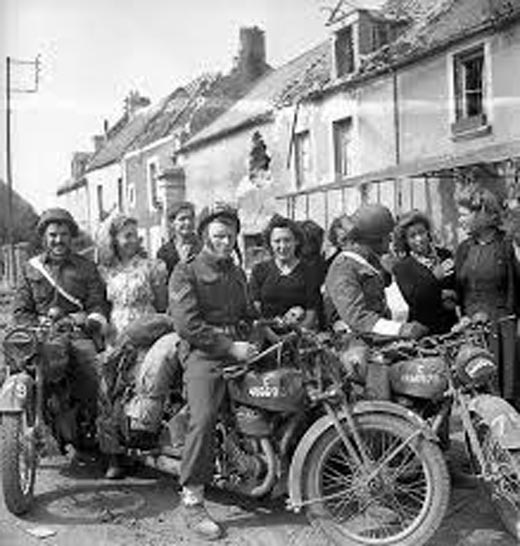 |
